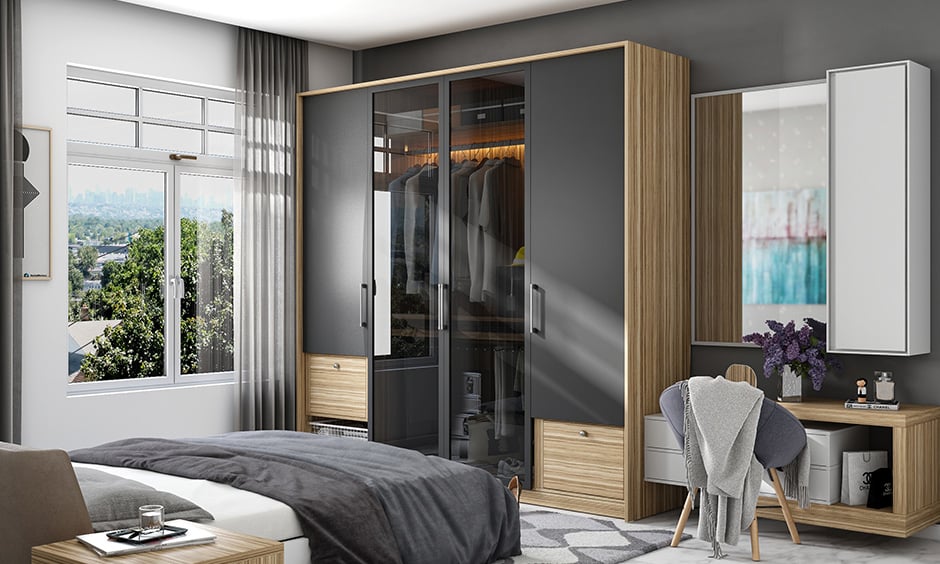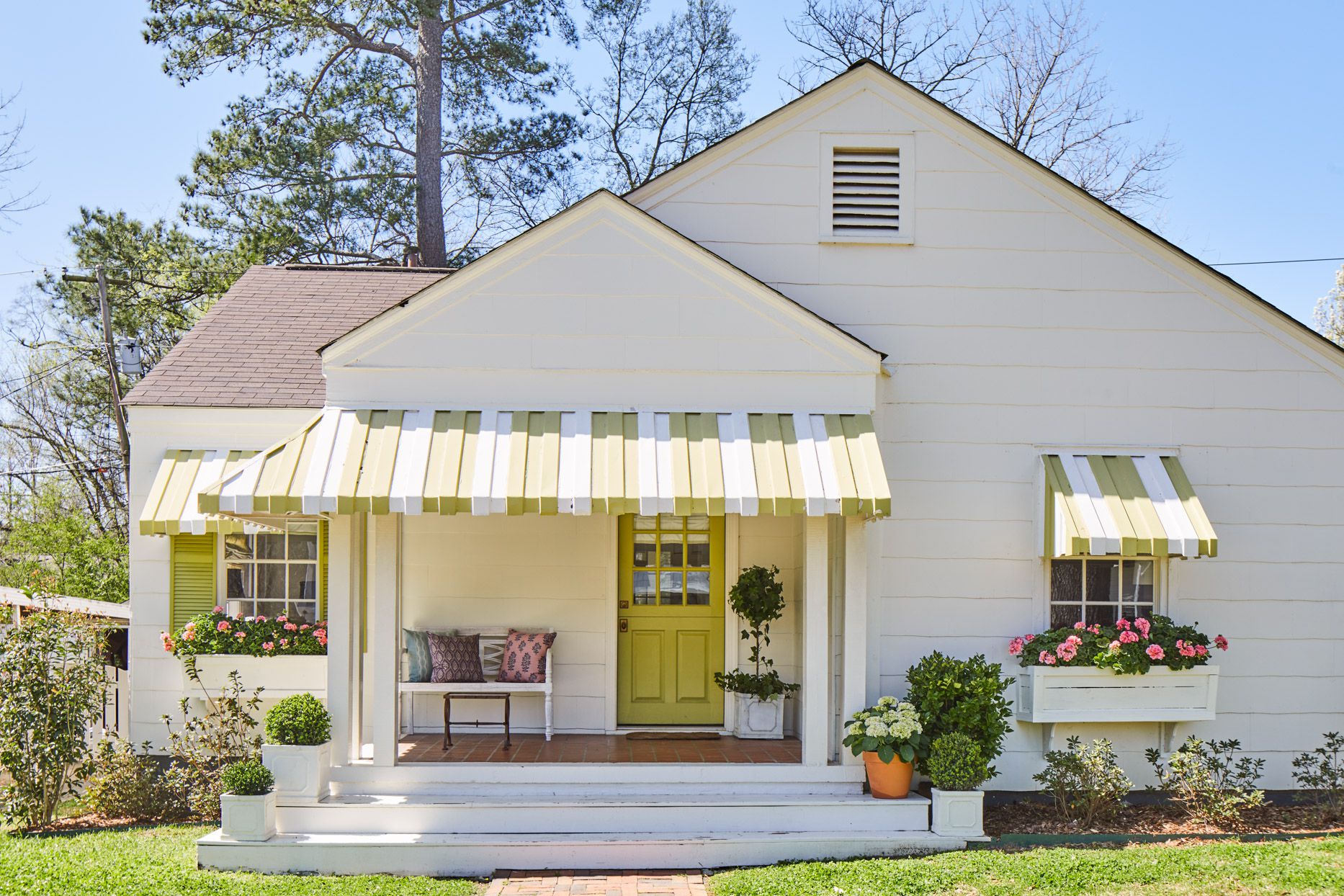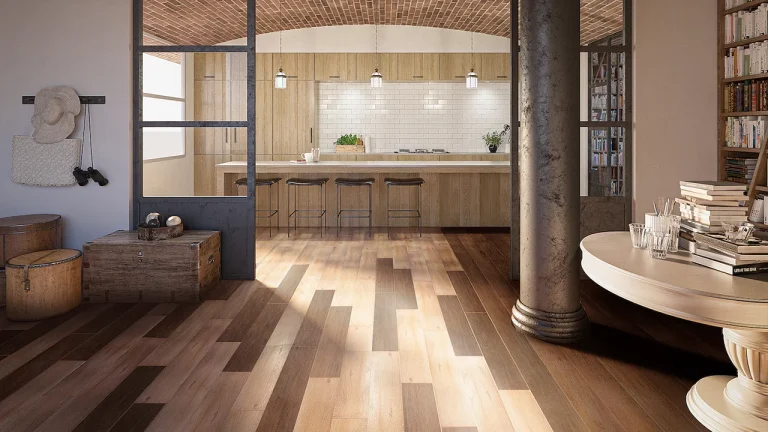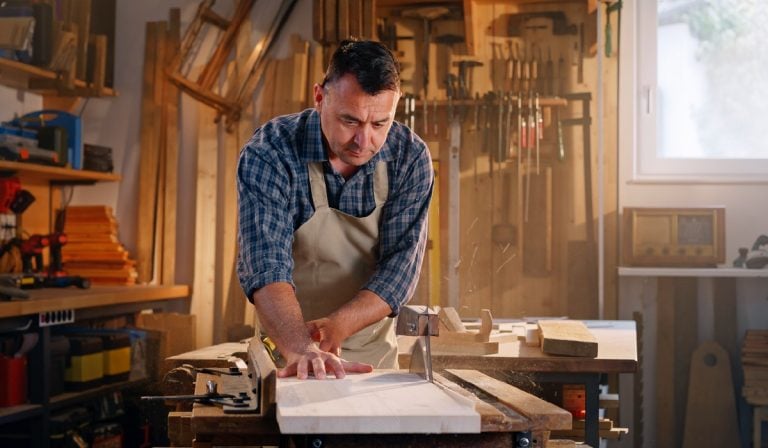The Different Types of Bedroom Wardrobes

Table of Contents
Wardrobes are central to bedroom design, going beyond storage to define the room’s style and design. This article explores various bedroom wardrobe types, highlighting their features and benefits, aiming to help readers choose the right fit for their space and preferences.
Freestanding Wardrobes
Freestanding wardrobes are standalone units that aren’t affixed to the wall or built into the room’s structure. Traditional wardrobes are typically built with rich woods, while more modern wardrobes tend to use laminate, veneer, metals, and glass panels.
The advantages of freestanding wardrobes lie in their versatility and ease of movement. They offer flexibility in terms of placement and come in diverse designs to complement various bedroom aesthetics. However, their limitations include occupying floor space and potentially lacking the level of customisation found in other wardrobe types like fitted wardrobes. Their portability might also result in less stability compared to built-in or fitted options.
Fitted Wardrobes
Fitted wardrobes are customisable storage solutions designed to fit perfectly into specific spaces in a room, making use of every single inch. These wardrobes are tailored to the room’s dimensions, making use of height, width, and depth to optimise storage capacity while moulding to the room’s architecture.
These wardrobes offer a range of options in materials, finishes, and configurations. Materials vary from wood to laminates, and sometimes glass, allowing for a range of styles to match the room’s decor. Configurations within the wardrobe can include shelving, drawers, hanging rails, and specialised compartments, precisely designed to accommodate various items.
Fitted wardrobes offer a range of options in materials, finishes, and configurations. Materials vary from wood to laminates, and sometimes glass, allowing for a range of styles to match the room’s decor. Configurations within the wardrobe can include shelving, drawers, hanging rails, and specialised compartments, precisely designed to accommodate various items.
A key advantage of fitted wardrobes is their ability to maximise space usage in even the most awkward corners. They offer extensive storage options while maintaining a well-blended appearance.
It’s worth noting that installing fitted wardrobes often requires professional assistance, and being fixed units, they may not be easily adaptable if room layouts change.
Sliding Door Wardrobes
Sliding door wardrobes present an ingenious space-saving solution, ideal for rooms where space is at a premium. Their defining feature, sliding doors, eliminates the need for additional clearance, making them perfect for smaller bedrooms or areas where swing-open doors would be impractical.
Typical materials used in sliding door wardrobes include wood, glass, mirrors, or even a combination, catering to a range of different preferences.
The advantages of sliding door wardrobes lie in their ability to conserve space and offer a sleek, contemporary look. However, limitations might include restricted access to one side of the wardrobe at a time and potential maintenance concerns with the sliding mechanism over time. It’s always worth purchasing a high-quality sliding door wardrobe to ensure the risk of issues with the sliding mechanism is reduced.
Walk-in Wardrobes
Walk-in wardrobes offer a luxurious and practical storage solution within bedrooms. These spacious rooms provide dedicated areas for organising clothes and accessories. They come with customisable shelving, drawers, and hanging space.
While they offer ample storage and an elegant dressing experience, their main drawback is the space they require, making them less suitable for smaller rooms. Additionally, creating a walk-in wardrobe can involve higher costs compared to other wardrobe options.
Built-in Wardrobes
Built-in wardrobes are custom-designed storage units integrated into the bedroom’s architecture. These wardrobes are constructed to fit precisely into available spaces, blending in with the room’s design.
Space optimisation is a key advantage, as these wardrobes make use of every inch available, from floor to ceiling, ensuring no space goes to waste. On top of this, customisation options allow for tailored configurations, materials, and finishes that align with both the room’s style and the homeowner’s preferences.
While these wardrobes offer excellent space efficiency potential, it’s crucial you find skilled fitters for built-in wardrobes in London. This professional assistance ensures high-quality installation, even in challenging spaces.
Factors to Consider When Choosing Wardrobes
Choosing the perfect wardrobe involves weighing up several essential factors:
1. Space
Evaluate the available space in your bedroom. For smaller rooms, consider space-saving options like sliding doors or fitted wardrobes. Larger rooms might accommodate walk-in wardrobes for added luxury.
2. Functionality
Assess your storage needs. Customisable options like built-in or fitted wardrobes offer tailored solutions for organising clothes and belongings. Consider the type and amount of storage required.
3. Style
Match the wardrobe style with your bedroom decor. Freestanding wardrobes provide versatility in design, while built-in options subtly integrate into the room’s architecture.
4. Budget
Determine a realistic budget for your wardrobe. Freestanding wardrobes tend to be more cost-effective, while customised options might incur higher costs.
Tips for Different Bedroom Sizes and Layouts:
Small Bedrooms: Opt for space-efficient solutions like sliding doors or fitted wardrobes to maximise storage without overwhelming the room.
Medium Bedrooms: Freestanding wardrobes offer versatility and ample storage, allowing for flexibility in arrangement within the room.
Large Bedrooms: Consider walk-in wardrobes for an extravagant storage and dressing area, utilising the abundant space available.
In Summary…
Choosing the right wardrobe type for your bedroom involves a thoughtful evaluation of various factors, including space, functionality, style, and budget.
Freestanding wardrobes offer versatility and a diverse range of design, plus they are also suited for various room sizes and preferences. Fitted wardrobes maximise space efficiency and customisation, however they might require professional installation. Sliding door wardrobes present an ideal space-saving solution, balancing accessibility and modern aesthetics. Luxurious walk-in wardrobes offer plenty of space but might not suit smaller rooms or tighter budgets. Built-in wardrobes seamlessly integrate with room architecture, emphasising space optimisation but necessitating skilled fitters for precision in installation.
When selecting the perfect wardrobe, consider your room’s dimensions, storage needs, design preferences, and financial constraints. Smaller rooms benefit from space-saving options, while larger spaces offer the luxury of extravagant wardrobe styles.
Ultimately, finding the right balance between functionality, aesthetics, and practicality will guide you towards the ideal wardrobe that fits perfectly with your bedroom design.
Author Bio: Mark Furrer
Mark is the founder of Beautiful Bedrooms, a company who have been manufacturing and installing premium fitted wardrobes and bespoke furniture solutions for clients throughout London and the UK. Mark and his team helps their customers with everything from the design and planning of their fitted furniture to the actual installation and finishings.






